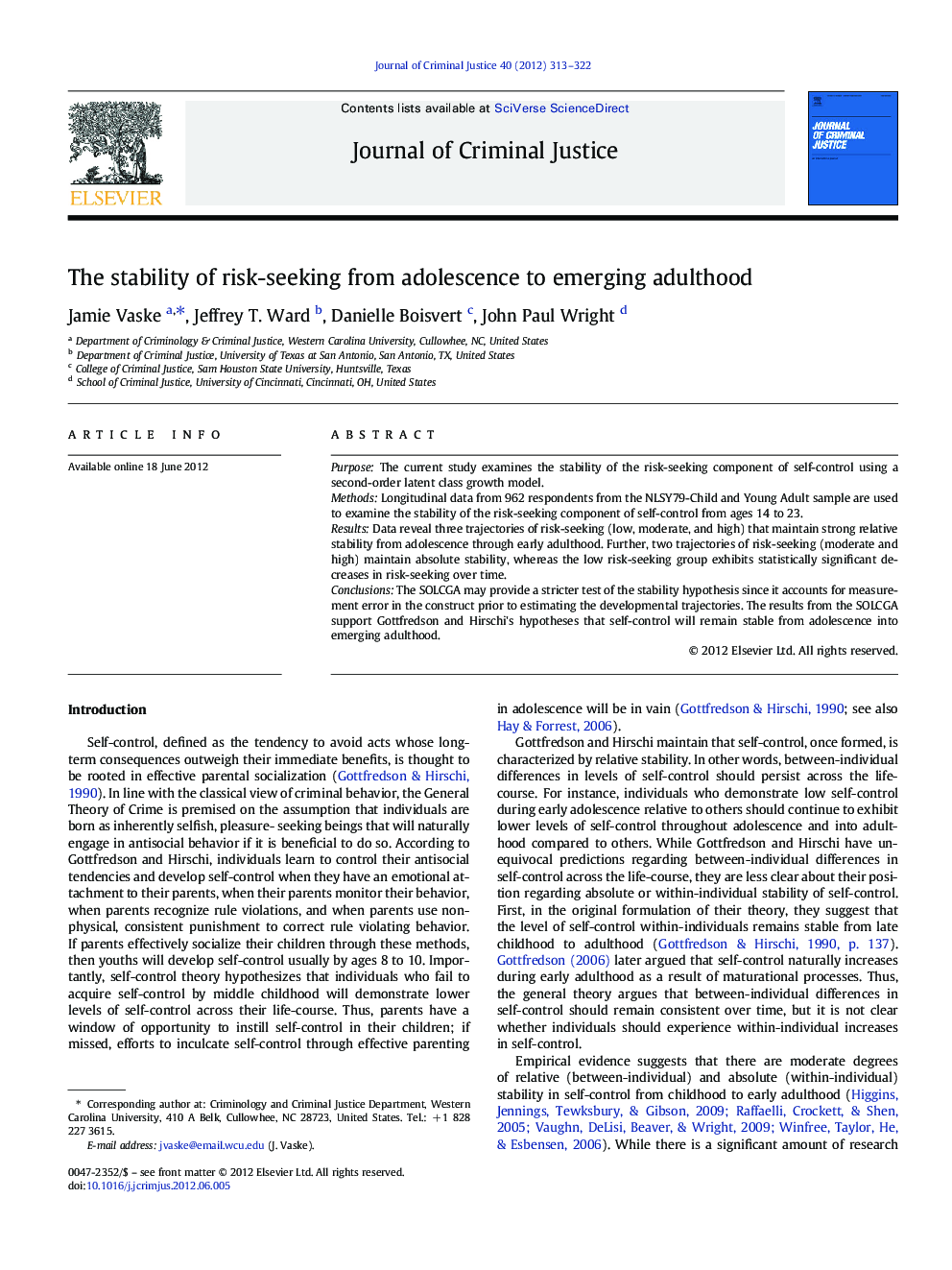| Article ID | Journal | Published Year | Pages | File Type |
|---|---|---|---|---|
| 882859 | Journal of Criminal Justice | 2012 | 10 Pages |
PurposeThe current study examines the stability of the risk-seeking component of self-control using a second-order latent class growth model.MethodsLongitudinal data from 962 respondents from the NLSY79-Child and Young Adult sample are used to examine the stability of the risk-seeking component of self-control from ages 14 to 23.ResultsData reveal three trajectories of risk-seeking (low, moderate, and high) that maintain strong relative stability from adolescence through early adulthood. Further, two trajectories of risk-seeking (moderate and high) maintain absolute stability, whereas the low risk-seeking group exhibits statistically significant decreases in risk-seeking over time.ConclusionsThe SOLCGA may provide a stricter test of the stability hypothesis since it accounts for measurement error in the construct prior to estimating the developmental trajectories. The results from the SOLCGA support Gottfredson and Hirschi's hypotheses that self-control will remain stable from adolescence into emerging adulthood.
► The risk-seeking component develops along three trajectories (low, medium, high). ► There is strong absolute stability for medium and high risk-seeking trajectories. ► The low risk-seeking group experiences increases in self-regulation into adulthood. ► All three groups show strong relative stability.
